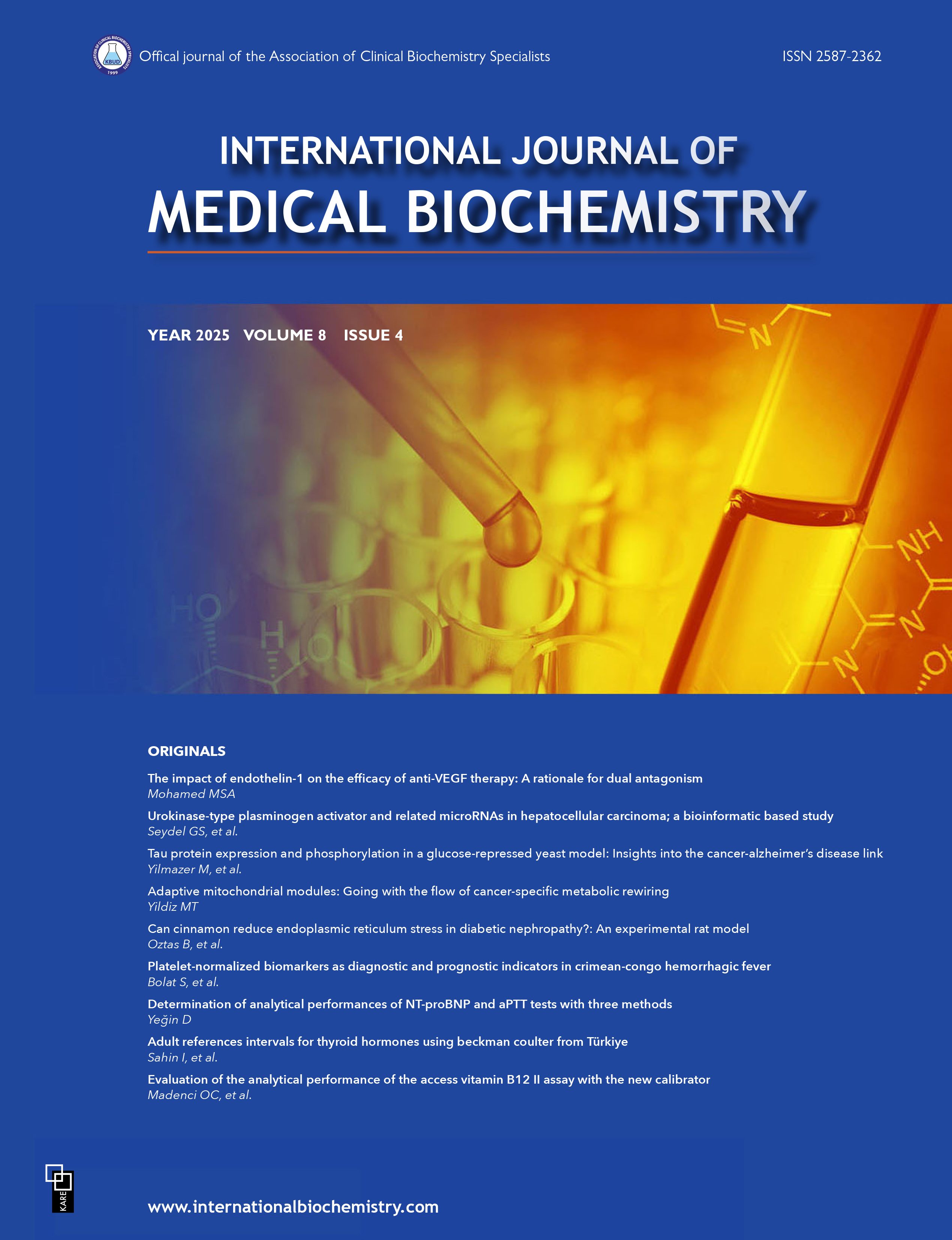Exchange of thiol-disulfide pairs in scorpion envenomation
Merve Ergin Tuncay1, Betul Ozbek Iptec1, Ozlem Bingol2, Mustafa Caliskanturk3, Salim Neselioglu1, Ozcan Erel11Department of Biochemistry, Yildirim Beyazit University, Faculty of Medicine, Ankara, Turkey2Department of Emergency Medicine, Soke Fehime Faik Kocagoz State Hospital, Aydin, Turkey
3Department of Emergency Medicine, 25 Aralik State Hospital, Gaziantep, Turkey
INTRODUCTION: The present study aims to analyze thiol-disulfide profile tests in scorpion envenomation.
METHODS: This study included 35 patients with scorpion envenomation and 41 healthy individuals. Thiol-disulfide test panel and myeloperoxidase and catalase activities were determined in both groups.
RESULTS: Patients with scorpion envenomation group had significantly higher native thiol concentrations and significantly lower disulfide amounts than the control group (p=0.001, for both). Also, total thiol levels were higher in patients than healthy individuals (p>0.05). Significantly decreased the disulfide/native thiol ratios and significantly increased disulfide/total thiol ratios and native/total thiol ratios were obtained in patients with scorpion sting than in the healthy subjects (p<0.001, for all ratios). Both catalase and myeloperoxidase activities increased in patients with scorpionism than controls (p<0.05, for both).There were powerful relationships among enhanced myeloperoxidase activities and thiol-disulfide system tests (p<0.05, for all).
DISCUSSION AND CONCLUSION: The equilibrium between thiol-disulfide couples was disrupted in scorpion envenomation. As thiol metabolism is a key component in inflammatory, immune and detoxification mechanisms, excessive thiols may be a response to these processes in scorpionism.
Manuscript Language: English







